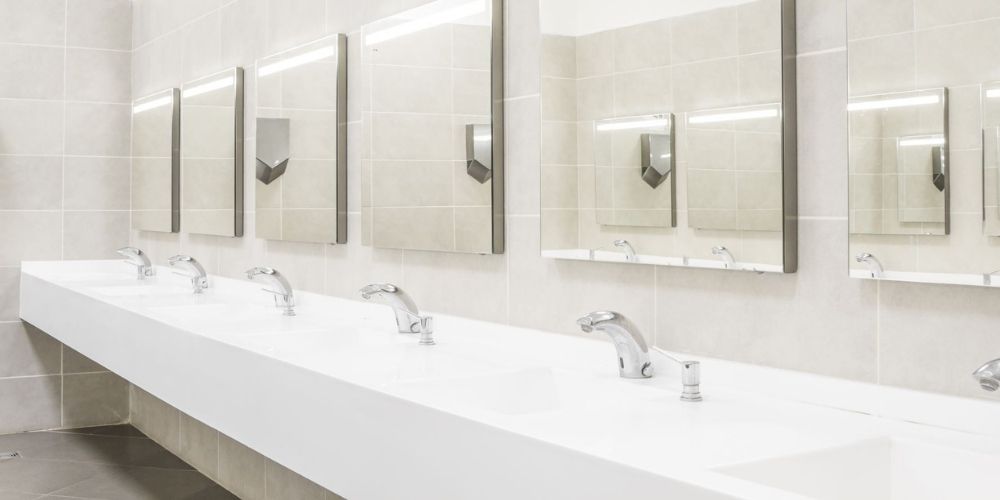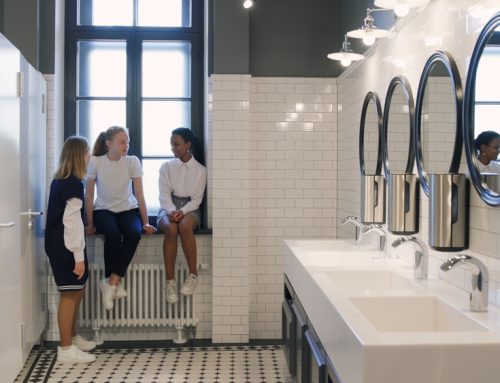There’s something decidedly optimistic about a new year. The promise of new beginnings, fresh hope and renewed energy and enthusiasm for making better choices.
It’s a time to look at how things can be done differently, in a bid to make positive changes and improvements. And when it comes to school life, where better place to start than in the toilets?
Think that’s an odd suggestion?
At ONVO, we’d have to disagree.
Teachers, support staff, students – everyone needs to wash their hands. Whether as Covid-19 protection, the result of a messy science experiment or after using the toilet, handwashing is a fundamental part of school life. And regardless of salary or academic capability, improvements here will benefit everyone. Boosting hygiene levels, reducing infection rates, and helping to create attractive, hygienic and user-friendly surroundings.
Sounds good, doesn’t it? So the question is, what are the options available and, more crucially, what’s right for your school? Let’s take a look…
Handwashing in schools
When it comes to handwashing, not all basins are created equal. The material and design of your wash basin can dramatically impact not only the look but on the functionality – and that’s before you start to even consider space demands and costs.
Some of the most popular options for handwashing in schools include:
· Ceramic basins
Frequently found in older school premises, ceramic basins are the more traditional handwashing option.
A reliable classic, yes, but they also come with numerous disadvantages, not least that they are easily damaged – the ceramic surface is particularly susceptible to chips and cracks. These imperfections – along with the exposed pipework typically found with wall mounted ceramic basins – quickly become breeding grounds for dirt and bacteria. Add to this the fact that, as individual basins, it can be difficult to accommodate the number of washing stations needed, and it becomes clear that in a school environment, ceramic basins struggle to make the grade.
· Solid surface wash troughs
A wash trough helps to combat space and maintenance issues. By combining multiple wash stations in one compact and streamlined product, you not only reduce wasted space between basins, but you minimise awkward nooks and crannies for cleaning.
With the capability to conceal all pipework and wires behind the trough, no boxing in is required. And by opting for a wash trough crafted from a solid surface – such as Corian – you can effortlessly combine functionality and style.
Corian offers a seamless, easy to clean surface, inhibits the growth of mould, is highly durable, long-lasting and stain-resistant – all qualities essential for the school environment.
· Stainless steel wash troughs
Much like a solid surface wash trough, their stainless-steel counterparts offer similar advantages in a school setting – including the fact that this design of basin is less susceptible to flooding.
However, stainless steel wash troughs are extremely heavy, meaning they require additional support (vanity units, extra legs) to keep firmly in place – making cleaning more arduous. Add to this the fact stainless steel has a cold industrial feel, and can have sharp edges, and wash troughs in this material quickly become a less favourable choice – especially where young children are concerned.
· HPL vanity unit
When it comes to educational establishments, budgets are invariably tight. With every penny scrutinised, it’s essential to source economical options – and this is where HPL (High Pressure Laminate) vanity units come into their own.
With low manufacturing costs, they fall at the cheaper end of the market and offer great flexibility in terms of design and colour.
These traits combine to make them a popular school option. But whilst it’s undeniable that HPL vanity units offer great value initially, this needs to be balanced against their longevity and durability.
Laminate doesn’t perform well in damp environments and whilst intended for intense use, it can be more easily damaged than a solid surface option – especially when exposed to the demands of day-to-day school life.
As with any traditional vanity unit with recessed basins, you benefit from the tidy appearance of boxed in pipework. But there’s no escaping that cleaning around each individual sink area, with lips and seals to tackle, is a more arduous and time-consuming task when compared to a wash trough. It’s also important to consider the increased floor space required to house these larger units.
· SGL vanity unit
SGL stands for Solid Grade Laminate – also sometimes referred to as compact grade laminate – this offers increased strength to HPL and has improved water-resistant properties. Making it a more practical choice for sink surrounds where splashing and surface water are likely to be a frequent occurrence.
Again, SLG vanity units come in a great choice of colours and can incorporate all manner of fun or educational designs, which can be a popular draw for settings looking to embrace school colours or create a bright modern environment conducive to learning.
Make a positive change in 2022 with ONVO
Ready to make a switch from traditional handwashing stations to a more efficient alternative? Then talk to the team at ONVO.
With products expertly designed, specifically with the school environment in mind, you’re already in the best place if you’re looking to make positive changes to your school facilities.
We’re so confident in the quality of our school handwashing products, we even offer a 10-year guarantee.
Talk to a member of our experienced team today for further help and advice by calling 0161 302 5340. Alternatively, you can email sales@onvo.com or fill in our contact form and we’ll be in touch soon.





Leave A Comment